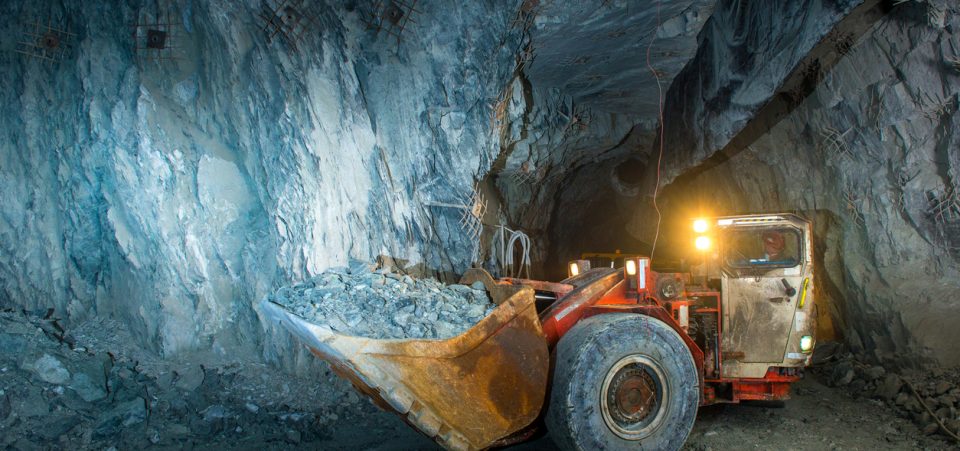Should Resource Investors Be Excited About a Special New Rare Earth Deposit in Japan?
In 2010 and 2011, investors thought rare earths were all the rage. Here was a group of minerals potentially able to compete with precious metals in value. More recently, there has been resurging enthusiasm about rare earths.
The Japanese have discovered a huge deposit at the bottom of the sea off their coast and within their territorial waters. Many have welcomed the discovery. Nonetheless, the nature of the rare earths game is such that a long time will pass before any excitement is warranted.
Rare Earths 101
Rare metals or rare earth elements (REE) are not especially rare. In the periodic scale, they comprise 15 elements (lanthanides), beginning with lanthanum and ending with lutetium—with atomic numbers between 57 and 71.
Often, the elements yttrium and scandium also tend to be classified as rare earths because they occur in the same ores as REE. They also have similar industrial applications. They are abundant and are found in sands and deposits in most of the world. The problem is finding ores that deliver the kinds of rare metals that the market and technology demand.
Not all rare earths are the same. Yet, they all have similar processing costs and environmental difficulties.
Thus, the value of a rare earth deposit depends almost exclusively on which of the 17 elements mentioned above are found, as well as their relative abundance and quality.
Rare earths are difficult to extract. Since their discovery in the 19th and 20th centuries century, there haven’t been significant improvements. Particularly, the environmental concerns around rare earth mining have only increased because the ores often include uranium and/or thorium, both of which are radioactive.
Make no mistake, rare earths are going to become ever more important. But, for the foreseeable future, production will remain concentrated in China. New deposits will have few chances of success if environmental regulations don’t change.
The Lynas Corp Example
There are many rare earth deposits in North America, Europe, Africa, and—especially—Australia. One company, Lynas Corporation Ltd (OTCMKTS:LYSCF, ASX:LYC), bet it all on a deposit in Mount Weld, which is in Western Australia. Unlike its rivals, Lynas decided to bypass the environmental and other restriction by shifting the processing—the most important part of a rare earth operation after the nature of the deposit—to Malaysia.
LYC stock was trading at some AU$25.00/share in 2010. It’s now trading at AU$2.50/share. And demand for rare earths has steadily increased, given their use in electric motors, batteries, and other high-tech components in a variety of sectors.
Lynas gambled, thinking it could eliminate the main problem facing Western companies wanting to produce rare earths. Nonetheless, it was forced to face opposition in Malaysia, where a well-funded non-governmental organization (NGO) put up a heavy challenge against the company’s advanced processing plant.
Lynas is still operating today. In fact, in relative terms, the company is flying thanks to demand from China and better-than-expected sales of electric vehicles worldwide.
Indeed, some rare earth metals have gone up in price since the terrible days of 2013/2014. Two of the most sought-after rare earths are praseodymium (Pr) and neodymium (Nd). Lynas produces a special mix called NdPr, whose price has increased from some $40.00 per kilogram in September 2016 to more than $90.00 per kilogram at the end of 2017. (Source: “Down to Earth: Amanda Lacaze Turns Around Australia’s Lynas Corp.,” Forbes, November 29, 2017.)
Yet, despite the much higher prices and rising demand, all of Lynas’s hard work was only able to reduce the company’s substantial losses, which had accumulated over years of struggle.
Exorbitant Cost Is Necessary for Rare Earths to Have a Chance Outside of China
Lynas and other companies like it were banking on deliberate Chinese production limits. In the United States, there was the infamous Molycorp Inc (OTCMKTS:MCPIQ), whose stock price went from hero (about $90.00/share) to zero (literally $0.00/share) in a matter of two years. For the West to have a fighting chance, it needed rare earths to remain highly expensive.
That was the only way to justify the high costs of mining and processing these materials. It’s a similar struggle to the one that Texas and Alberta shale and mud sand oil extractors face against competition from Saudi Arabia, the Gulf, and Russia. Prices must be high for the effort to have commercial sense.
Also note that, in 2010, REEs benefited from the tail end of the resource price boom that intensified in 2009–2010.
In 2010 and 2011, Japan and China engaged in a heated diplomatic dispute for sovereignty over a disputed set of uninhabited islands in the Sea of Japan (or the East China Sea). The Japanese call them the Senkaku Islands; the Chinese call them the Diaoyu Islands.
The dispute was such that China, which produced then—as now—some 90% of the world’s total REE production, virtually cut off supply of crucial rare earths to Japan. China also threatened to cut off the United States and its allies from these essential minerals.
It was this largely geopolitically charged event that pushed rare earth prices to a level that made them the hottest item in natural resources for a couple of years. The U.S. Department of Defense considers rare earths to be strategic resources.
There are a number of uses for rare earths in many crucial weapon systems. For example, missile guidance systems, radars, and other components in aerospace rely on tiny quantities of rare earths.
The metals are used to make magnets that are so powerful—and so small—as to allow a gradual miniaturization of the components in many devices. Rare earths have allowed the electronics industry to produce more powerful computer devices—including smartphones—without increasing their weight.
As for China, after the island dispute with Japan cooled off—thanks to the intervention of the World Trade Organization (WTO) in 2012, it turned out that China needed to sell these resources abroad as much as it used them domestically. Moreover, so much of the world’s electronic devices are manufactured in China that demand is greatest in China anyway.
Japan has also outsourced a large chunk of its industrial capacity among its Asian neighbors. But, unlike the United States (or parts of Europe), it wants to keep this phenomenon in check. Thus, Japan is constantly on the hunt for alternative rare earth sources to avoid reliance on China—just in case geopolitical tensions between Beijing and Tokyo flare up again.
Now, the new Japanese rare earth deposit has everyone excited again that an alternative to China exists.
Should You Be Excited About Japan’s New Rare Earths Deposit?
To make a complex issue simple, it’s not yet time to give up gold or silver in favor of REEs. Yes, researchers claim that the new deposit discovered off the Japanese coast could supply the world with these raw materials for decades, if not centuries, to come.
The deposit is located near Minamitori Island, which is some 1,100 miles southeast of Tokyo.
The metals that the deposit could yield include all of the ones that everybody wants: yttrium to cover global demand for 780 years, dysprosium for 730 years, europium for 620 years, and terbium for 420 years. (Source: “A massive, ‘semi-infinite’ trove of rare-earth metals has been found in Japan,” CNBC, April 12, 2018.)
Japanese geologists claim that the deposit contains some 16 million tons of precious rare earth metals. Although they are abundant in the earth’s crust, their problem is that they’re widely scattered and contained within complex ores. Not all ores contain sufficient quantities of the stuff that the manufacturers of “future technology” crave.
It’s the combination of the right mix of elements and the right location that is rare. The recent Japanese discovery has been touted as just that kind of ideal combination.
It’s also why some are suggesting that it’s the find that could alter the global economy—in the sense of slowing down China and revamping industrial strength in the Organisation for Economic Co-operation and Development (OECD) countries like the U.S. and Japan.
The Caveat? Stratospheric Mining and Processing Costs
No matter how dedicated and efficient they are, Japanese mining experts and engineers will face great difficulties in extracting complex ores from the bottom of the sea. Tokyo won’t soon replace Beijing as the capital of rare earth trading.
Much more research will be needed to make the deposit—however great it may be—commercially viable.
Still, demand for rare earths is not going anywhere but up. Some of the metals in the group—like scandium—have applications in aerospace that help save considerable weight while adding strength to the airframes. A little scandium goes a long way in strengthening welds (while avoiding the use of rivets) in a fuselage or a wing.
Is it time to bet it all on rare earths as some did in 2010–2011 (only to lose everything in 2012–2014)? No, but rare earths cannot be dismissed. They are essential resources. Thus, the search for new deposits and processing methods will continue.
The Japanese can still dream of controlling a huge portion of the global supply. But would this force foreign buyers to rely exclusively on Japan? Most likely not. The Chinese will still be able to beat them on price—at least in the short and medium term.






